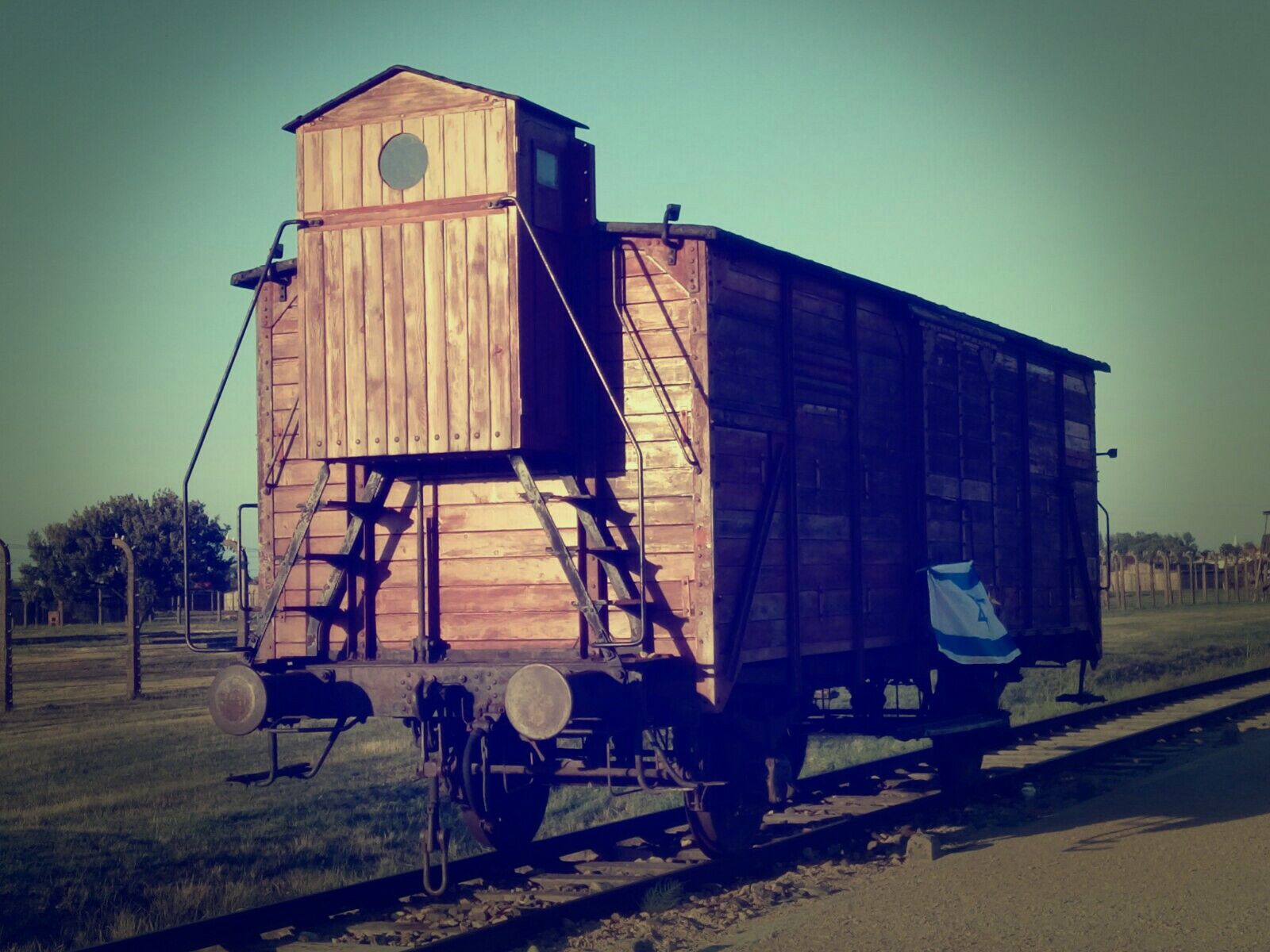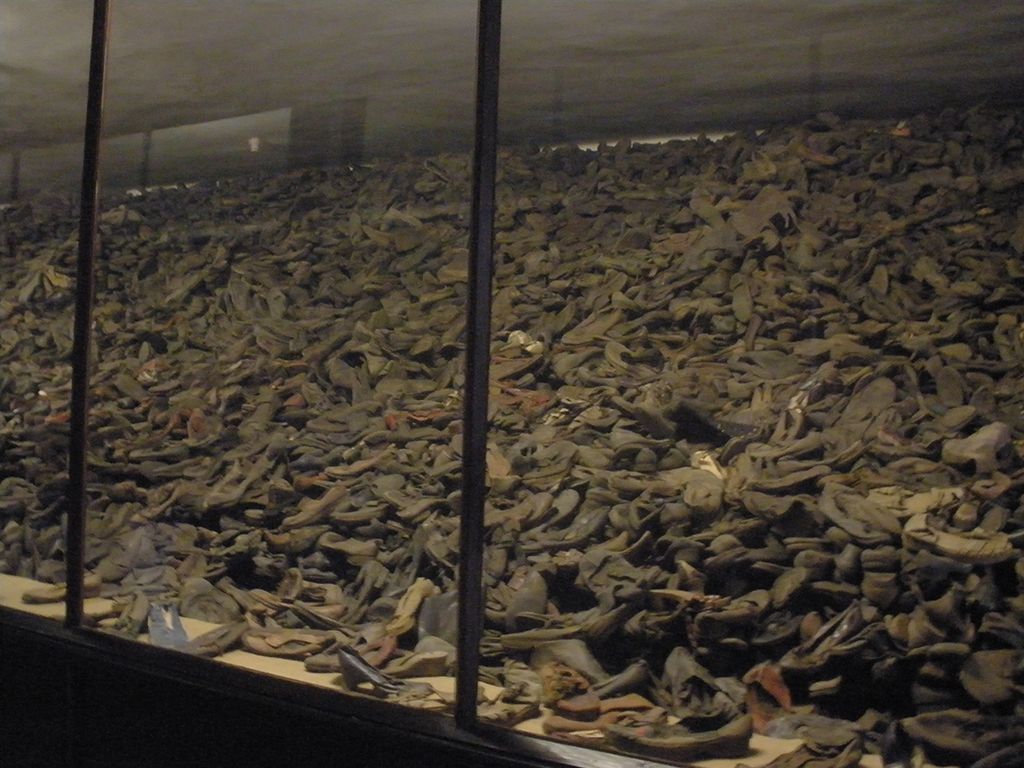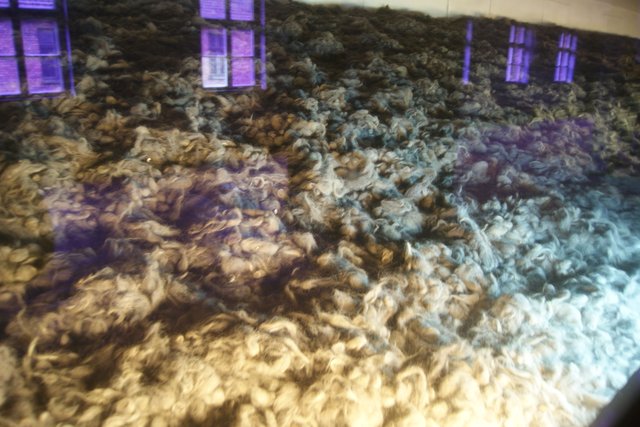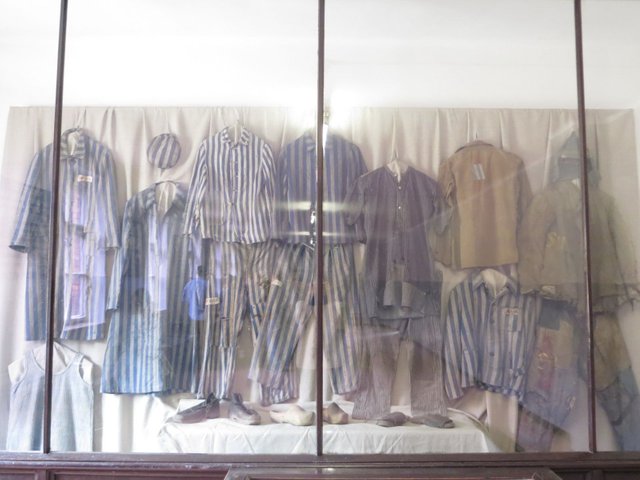Campo de concentración AUSCHWITZ (2ªParte)
Holaaa a todos! Tanto si leisteis o no la primera parte, os digo que esta es más interesante. (Al menos para mi)
Helloooo everbody! Whether you have read the first part or not, I recommend that you read this because it is more interesting.
Holaaaaaa!!!!! ¿Quereis saber más de Auschwitz? Pues ya estoy de vuelta. Hoy va a ser un escrito un poco más profundo ya que el tema que voy a tratar es más peliagudo que el de ayer.
Primero, quiero contaros que cuando los prisioneros sabían que iban a ir a los campos llegaban con todas sus cosas, sus maletas, sus peines, sus gafas, sus ahorros y sus pertenencias más preciadas ya que ellos creían que iban a un campo de trabajo en el que, evidentemente, no iban a tratarles bien pero iban a trabajar y para ello necesitaban sus cosas.
Desde su captura en la ciudad en la que vivían, eran subidos a unos trenes de mercancías hasta Auschwitz. Dependiendo de tu lugar de origen (acordaos del mapa-esquema de ayer) podías permanecer hasta una semana de viaje en unas condiciones horribles, sin comida y apelotonados en el mismo vagón hasta 70 personas con sus enseres. Si tenias suerte, hasta morías antes de llegar al campo por asfixia, hambre o deshidratación.
Hi! Do you want to know more about Auschwitz? Well, I'm back. Today is going to be a writing a little deeper since the subject that I'm going to try is trickier than yesterday.
First, I want to tell you that when the prisoners knew they were going to go to the fields they came with all their things, their bags, their combs, their glasses, their savings and their most precious belongings, since they believed they were going to a labor camp in Who, obviously, were not going to treat them well but they were going to work and for that they needed their things.
From their capture in the city where they lived, they were taken on freight trains to Auschwitz. Depending on your place of origin (remember the map-outline of yesterday) you could stay up to one week of travel in horrible conditions, without food and crammed in the same car up to 70 people with their belongings. If you were lucky, you even died before reaching the camp by suffocation, hunger or dehydration.

Cuando llegabas allí, besabas la tierra porque creías que lo peor ya había pasado. Al fin y al cabo, ahora tan sólo tendrías que trabajar para los alemanes...aquí empezaban las mentiras. Ellos se encargaban de tu equipaje y te obligaban a señalar tu maleta de alguna forma para que después de hacerte un reconocimiento médico te fuera devuelta. Mentira. Separaban a los hombres de las mujeres y desde aquí señalaban a los hombres que mejor condición física tuvieran para trabajar, el resto: mujeres, niños y ancianos...eran exterminados de inmediato. Claro que a ellos les decían que iban a “ducharse”. Mentira.
Aquí teneis fotos de algunas pertenencias que los nazis robaron a los prisioneros y no tuvieron tiempo de destruir: maletas, zapatos, cacerolas, peines....
When you got there, you kissed the earth because you thought the worst was over. After all, now you only have to work for the Germans ... here lies began. They took care of your luggage and forced you to point your suitcase in some way so that after getting a medical examination you were returned. Lie. They separated the men from the women and from here they indicated to the men what better physical condition they had to work, the rest: women, children and old people ... were exterminated immediately. Of course they told them that they were going to "shower". Lie.
Here you have pictures of some belongings that the Nazis robbed the prisoners and did not have time to destroy: suitcases, shoes, pans, combs ....




Y lo más impactante, pelo. Pelo de los prisioneros gaseados con el que obligaban a los otros prisioneros a confeccionar almohadas o hilar alfombras para su posterior venta. A pesar de que algunos podían imaginarse de donde venía el pelo, jamás nadie creería la exterminación masiva que allí se estaba produciendo.
And the most striking, hair. Hair of the gassed prisoners with which they forced the other prisoners to make pillows or spin carpets for later sale. Although some could imagine where the hair came from, no one would ever believe the massive extermination that was taking place there.

Tras hacer la selección y exterminar a las mujeres y de más, llevaban a los prisioneros a las duchas de verdad para desinfectarlos y les daban su pijama de trabajo (el famoso pijama de rayas azules). Cada pijama iba señalizado en una parte de la camisa, arriba a la izquierda, con una forma determinada dependiendo del grupo o raza al que pertenecieras para estar señalados e identificables para los alemanes. Y debajo su número de prisionero. Después, te asignaban una tarea fijandose en tu condición física.
Los supervivientes dieron testimonios de aquellos trabajos y la mayoría coincidió en que el mejor trabajo que podían asignarte era el de limpiar las letrinas de los prisioneros. Las letrinas eran agujeros en un muro y no tenían desague por lo que los limpiadores tenían que meter las manos, y casi los brazos enteros para poder sacar las heces y posteriorimente limpiar la letrina. Además, era el mejor trabajo porque no te pegaban ni se acercaban a ti. Los nazis, tenían miedo de que les contagiaras alguna enfermedad o el mal olor. De hecho, estos trabajadores no se cansaban tanto como otros porque estaban bajo techo y así se refugiaban también de las temperaturas extremas; en invierno 15 grados bajo cero o en verano a 28 grados. Cabe señalar como curiosidad, que los alemanes nazi no permitían que hicieras tus necesidades cuando pudieras si no que tan solo podías ir a las letrinas por la mañana y por la noche o en caso de extrema importancia.
After making the selection and exterminating the women and more, they took the prisoners to the real showers to disinfect them and gave them their work pajamas (the famous blue striped pajamas). Each pajama was marked in a part of the shirt, top left, with a certain shape depending on the group or race to which you belong to be identified and identifiable for the Germans. And below your prisoner number. Afterwards, you were assigned a task by focusing on your physical condition.
The survivors gave testimony of those jobs, and most agreed that the best job they could do was to clean the latrines of the prisoners. The latrines were holes in a wall and had no drain so the cleaners had to put their hands, and almost the whole arms to remove the feces and then clean the latrine. Besides, it was the best job because they did not hit or come near you. The Nazis were afraid of infecting them with sickness or bad smell. In fact, these workers did not tire as much as others because they were indoors and thus took refuge also from extreme temperatures; in Winter 15 degrees below zero or in summer at 28 degrees. It should be noted as a curiosity that the Nazi Germans did not allow you to do your needs when you could if not only that you could go to the latrines in the morning and at night or in case of extreme importance.
Después, tras un duro día de trabajo llegaba la hora de dormir porque la inmensa mayoría de las veces ni si quiera cenaban. Cabe señalar que al principio, dormían todos en el suelo con paja que los alemanes nazi les había puesto. Más tarde, decidieron ponerles una pequeña manta para evitar el contagio de enfermedades entre prisioneros. Al final, por falta de espacio se les ocurrió la idea de las literas. Eran literas muy estrechas de tres pisos en las que dormían 2 o 3 personas por colchón. Aquí os dejo las fotos para que veais la gravedad del asunto.
Como bien sabeis, muy pocos judíos trabajaban en los campos ya que la mayoría iba directamente a morir. Así que cuando me refiero a prisioneros doy por hecho que la mayoría de ellos no eran judíos.
Then, after a hard day's work, bedtime came because the vast majority of the time or even dinner. It should be noted that at first they all slept on the ground with straw that the Nazi Germans had put them. Later, they decided to put a small blanket to avoid the spread of diseases among prisoners. In the end, for lack of space they came up with the idea of the bunk beds. They were very narrow three-story bunk beds where 2 or 3 people slept per mattress. Here I leave the photos for you to see the seriousness of the matter.
As you well know, very few Jews worked in the fields since the majority went directly to die. So when I refer to prisoners I take it for granted that most of them were not Jews.



(Esta última sala era de los prisioneros que tenían un mejor trato)

En este momento, creo que ya va tocando comentar los castigos que se les impartían. Esta parte del recorrido la tengo grabada en video y todavía no puedo publicarla pero os lo voy a contar.
Cuando un prisionero cometía una infracción, ya sea robar una punta de pan duro o intentar escapar, los nazis no dudaban en imponer un castigo ejemplar; eso sí, separado del resto de prisioneros para que nadie viera la crueldad del castigo. Habían celdas de castigo en el sótano con determinados nombres y para determinado castigo:
Celda de hambre: En esta celda te encerraban sin darte ningun tipo de alimento ni bebida durante días, de esta forma te dejaban morir allí y si cuando se cansarán abrían la puerta y aun tenías vida...no dudaban, te disparaban o te pinchaban etanol en el corazón.
Celda de estar de pie: Esta celda tenía que ser muy dura ya que en aproximadamente un metro cuadrado metían hasta 8 personas juntas y a la vez. Tenías que entrar por una puerta pequeña que estaba en la parte de bajo de la pared y luego al entrar ponerte de pie. Te dejaban allí por días hasta que los prisioneros empezaban a morir y si conseguias salir con vida...te mataban ellos.
Celda de la oscuridad: En esta te dejaban por días sin ningun tipo de ruido o luz y entraban a pegarte palizas a veces, perdías la noción del tiempo por completo.
Luego, estaban los castigos al aire libre:
Soga: Aqui te colgaban del cuello y morías.
El paredón: Era una pared (como la de la foto de bajo al final) donde ponían a varios prisioneros o a uno y lo disparaban hasta que no respirase. Los fusilaban.
Palo inclinado: Este castigo se basaba en la existencia de un poste de madera un tanto inclinado con una arandela de la que te colgaban. Te colgaban de espaldas al poste y con los brazos retorcidos de modo que cuando no pudieras ya sostenerte con los pies y te resbalases, se te salían los hombros del sitio y claro, ya no eras últil para trabajar y te asesinaban.
Estos son los castigos reconocidos y que se observan con claridad pero después tenemos otro tipo de torturas. Por ejemplo:
Si por casualidad se quedaba alguna mujer en el campo de concentración habían unos médicos que experimentaban con ella operaciones o médicamentos para la no fecundación. Por otro lado, si caias enfermo (los prisioneros temían enfermar) experimentaban farmácos contigo y cuando ya no servías para nada te inyectaban etanol en el corazón.
Y hasta aquí la publicación de hoy, mañana os contaré todo lo relacionado con la cámara de gas.
¡GRACIAS!
At this moment, I think it is already touching to comment the punishments that were given to them. This part of the tour I have recorded on video and still can not publish it but I will tell you.
When a prisoner committed an offense, whether stealing a point of hard bread or trying to escape, the Nazis did not hesitate to impose an exemplary punishment; That yes, separated from the rest of prisoners so that no one saw the cruelty of the punishment. There were punishment cells in the basement with certain names and for a certain punishment:
Cell of hunger: In this cell they locked you up without giving you any food or drink for days, this way they let you die there and if when they get tired they open the door and you still had life ... they did not hesitate, they shot or they pricked you Ethanol in the heart.
Standing cell: This cell had to be very hard since in about a square meter they put up to 8 people together and at the same time. You had to go in through a small door that was on the bottom of the wall and then step inside to get you up. They left you there for days until the prisoners began to die and if you could get out alive ... they would kill you.
Dark cell: In this they left you for days without any noise or light and they would beat you sometimes, you lost the notion of time completely.
Then there were the punishments in the open air:
Soga: Here they hung you by the neck and you died.
The wall: It was a wall (like the one in the bottom photo at the end) where they put several prisoners or one and shoot him until he did not breathe. They were shot.
Inclined stick: This punishment was based on the existence of a wooden pole somewhat inclined with a washer from which they hung. They hung you with your back to the pole and with your arms twisted so that when you could no longer support with your feet and slip, you would leave the shoulders of the site and of course, you were no longer useful to work and you were killed.
These are the recognized punishments that are clearly observed but then we have other types of torture. For example:
If by chance a woman remained in the concentration camp there were doctors who experimented with her operations or medications for non-fertilization. On the other hand, if you fell sick (the prisoners feared sick) they experimented with pharmacies with you and when you were no longer useful, they injected you with ethanol in your heart.
And so far the publication today, tomorrow I will tell you everything related to the gas chamber.
THANK YOU!

Estos son un par de judíos que estaban visitando el campo cuando fuimos.

Esta es la torre de vigilancia

Esta es la valla que separaba soldados de prisioneros.
Beautifully done in old way... @paulamartinsaba
very nice....
Muy interesante. Hace unos años estuve en el campo de Dachau (Cerca de Munich), realmente se te encoge el alma al ver todas las barbaridades que hicieron. Pero es importante mostrarlo para que no se olvide y no se repita la historia. En España hace falta reconocer la memoria histórica, aquí no ha pasado nada y somos el segundo país (del mundo) detrás de Camboya con más muertos sin reconocer y enterrados en fosas comunes en muchas cunetas del país.... Una vergüenza.
escalofriante.... te sigo